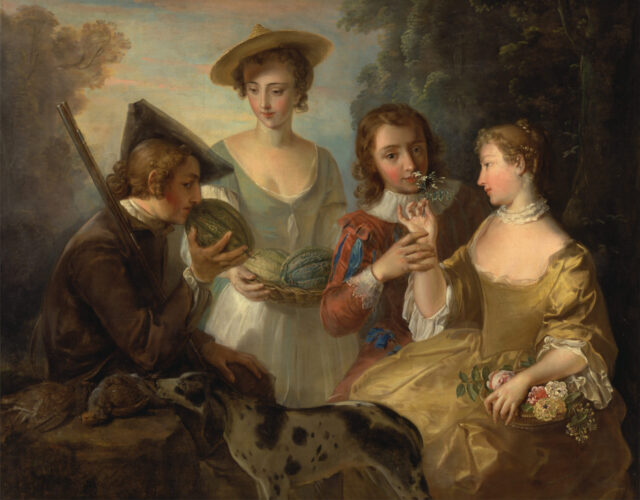There’s no sense so intimate—or mysterious—as smell. Unlike other senses smell is wired directly to the emotional centers in our brain. The reason for this remains obscure, but the setup gives odors an uncanny power to unlock hidden memories. Chemically, smell is enigmatic as well. Similarly shaped molecules can have quite different odors, and molecules that look nothing alike can smell almost the same. But thanks to an innovative new study, scientists have finally gotten some traction on olfaction, allowing them to match specific chemical features to specific odors for the first time.
The study began when sensory scientists at Rockefeller University recruited 49 volunteers to rate the smells of 476 chemicals. The subjects ranked the intensity and pleasantness of each, then classified the scents using 19 descriptors, including fish, sour, sweaty, bakery, and decayed. The scientists also mapped out the chemical geometry of all the molecules, including the identity of every atom within them.
As a next step the researchers turned to an unlikely source for help: artificial intelligence. The DREAM Challenges website promotes cooperation between biology and computer science by suggesting topics that might lend themselves well to computer analysis. In this case the Rockefeller team challenged computer geeks to find correlations in their data between odor and chemical structure. Eighteen teams accepted the challenge, with groups from the University of Michigan and Arizona State University developing the most accurate algorithms. The Rockefeller researchers then gathered input from all the teams to further investigate the chemical nature of smell.
A few trends became clear immediately. Small molecules, for instance, tended to produce much more intense smells than large ones. Having polar groups within the molecule (regions of strong positive or negative charge), such as phenols, enols, and carboxyls, also ratcheted up the smell’s intensity.
When it came to matching odors to structures, the computers had the easiest time predicting the smell of 3-methyl-cyclohexanone (a camphor-like odor) and ethyl heptanoate (sweet grape). The hardest molecules to predict included L-cysteine, which smells somewhat like rotten eggs. The 19 broad descriptions of odors also fell into two clusters: those hard to guess (wood, urinous, musky) and those easy to guess (fruit, spices, burnt, garlic).
The garlic prediction is especially interesting for periodic table buffs since it explains one of the table’s great mysteries—why tellurium, element 52, smells like the most pungent garlic on Earth. (Chemists exposed to tellurium often reek like garlic for weeks or even months afterward. The smell is so overwhelming that according to legend, a few researchers have been driven to suicide.) The Rockefeller study revealed that the presence of sulfur atoms is strongly associated with garlic smells, and tellurium sits just two spots below sulfur on the periodic table. So it’s no surprise that the nose would interpret tellurium and sulfur compounds in similar ways.
One surprise for the smell scientists was that the subunits of larger, more complicated molecules didn’t seem to interact much. Instead, each part produced an odor in the nose more or less independently of other parts. The overall smell was therefore the simple sum of each autonomous section.
The study certainly isn’t the final word on the chemistry of smell. While the algorithms had an easy time linking structure to odor for 8 of the 19 descriptors, the other 11 remain mysterious. Another caveat is that the 476 scents here were all individual molecules, while most real scents include dozens or even hundreds of volatile chemicals interacting inside the nose. Perceived traits, such as pleasantness or intensity, could also vary among people with different genes or from different cultures.
The study nevertheless represents a big step forward for olfaction scientists—not to mention perfumers and food chemists, who would love the ability to design scented molecules from scratch instead of having to laboriously test them one by one. And manufacturers would of course love to take advantage of the powerful emotions and memories that smell evokes.
The human nose sometimes gets a bum rap as a weak, ineffectual organ. Although we’re nowhere near as talented as, say, bloodhounds, human beings actually have pretty sharp schnozzes: a 2014 study estimated we can distinguish roughly one trillion different scents. The Rockefeller study provided the first real clues for how we sort through all those possibilities, and it pointed the way forward to future work. In other words, lurking beneath the garlicky and floral and musky scents in these labs, we can also detect the first whiffs of the sweet smell of success.




